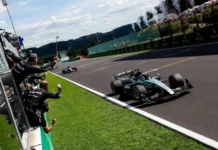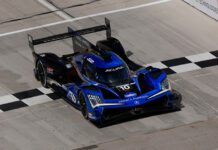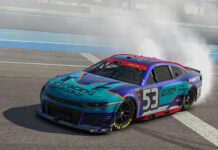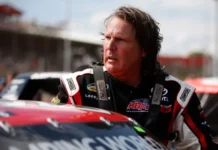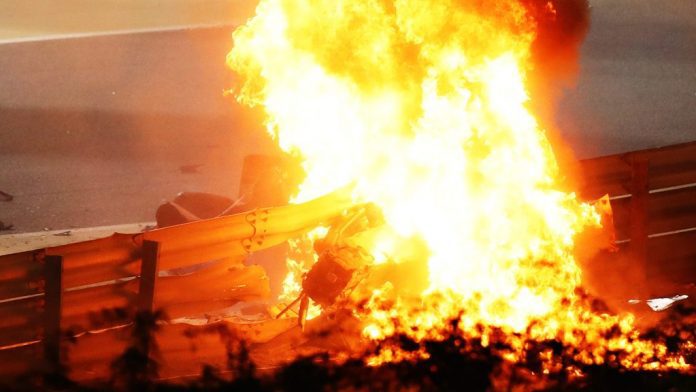Romain Grosjean survived a fiery crash after a head-on collision with a barrier during the opening lap of the Bahrain Grand Prix.
Attempting to pick his way through traffic, Grosjean veered right and clipped the left front wing of Daniil Kvyat, sending Grosjean head on into a metal barrier at full speed. The impact split Grosjean’s car in half with a massive explosion, and the front tub penetrated the barrier, sliding underneath to the other side while the fire raged around the car.
Grosjean was engulfed by flames in the cockpit for nearly 20 seconds before being able to scramble out of the cockpit and into the waiting arms of a safety worker from the F1 Medical Car. Grosjean was able to walk with assistance to an ambulance for transport to the medical care center.
According to the Sky Sports F1 broadcast, the Haas F1 Team said the Frenchman had suspected broken ribs and would be airlifted to a nearby hospital for a full examination.

In an interview, Haas team principal Guenther Steiner said Grosjean had “light burns on his hands and his ankles.
“Obviously, he’s shaken, and for sure, he’s going through all the checks,” Steiner said. “But he’s conscious. He seems to be OK. I want to thank the rescue crews. They are very quick. The marshals and FIA people did a great job. It is scary.
And his escape to safety#BahrainGP ???????? #F1 pic.twitter.com/4NJ22yVAPK
— Formula 1 (@F1) November 29, 2020
“When you see the barrier torn down, it’s unbelievable. But I think we were lucky by being unlucky. I prefer that luck to racing luck. He seems to be doing good. Hopefully, there’s nothing coming. He got away with it, I think.”
Formula One technical director Ross Brawn told Sky Sports that the halo device, which was installed on F1 cars in 2018 to prevent cockpit intrusion and protect drivers’ heads, had prevented the type of fatal crash that often happened in similar impacts from years ago.
“Undoubtedly, we’re going to do a very deep analysis of all the events that occurred because there were a number of things that shouldn’t have happened,” Brawn said in a postrace interview. “The fire was worrying. The split of the barrier was worrying. I think the positives are the safety of the car. That’s what got us through today. … There’s no doubt the halo was the factor that saved the day and saved Romain.”
Asked if anything had broken on the car, Steiner said, “it looked like he was just moving across and went over the front wheel and just crashed at full speed into the barrier. That’s what it looks like to me. As long as he’s good, that’s the most important thing.”
UPDATE: Romain has some minor burns on his hands and ankles but otherwise he is ok. He is with the doctors just now.#HaasF1 #BahrainGP
— Haas F1 Team (@HaasF1Team) November 29, 2020
Alan van der Merwe, driving the F1 medical car that trails the field, was among the first on the scene, helping Grosjean walk from the crash site.
“We’ve never seen that much fire,” van der Merwe said. “In 12 years I’ve not seen that much fire in an impact like that.
“We just took a little while to process. I’m sure it was only a second or so, but it felt like ages. And then Romain actually started to get out of the car himself, which is pretty amazing after an accident like that. There was some relief when we got back here, and he was OK.
“It was very impressive. It just goes to show all the systems that we’ve developed, everything worked hand in hand. The halo, the barriers, the seat belts, everything worked just how it should. Without just one of those things, it could have been a very different outcome.”
Notably, the Bahrain GP was dedicated to first responders.
The race, which Lewis Hamilton was leading after starting from the pole, was red-flagged after the first lap as crews worked to repair the barrier.
Work to repair the barrier is continuing #BahrainGP ???????? #F1 pic.twitter.com/LqA9ErafqW
— Formula 1 (@F1) November 29, 2020







